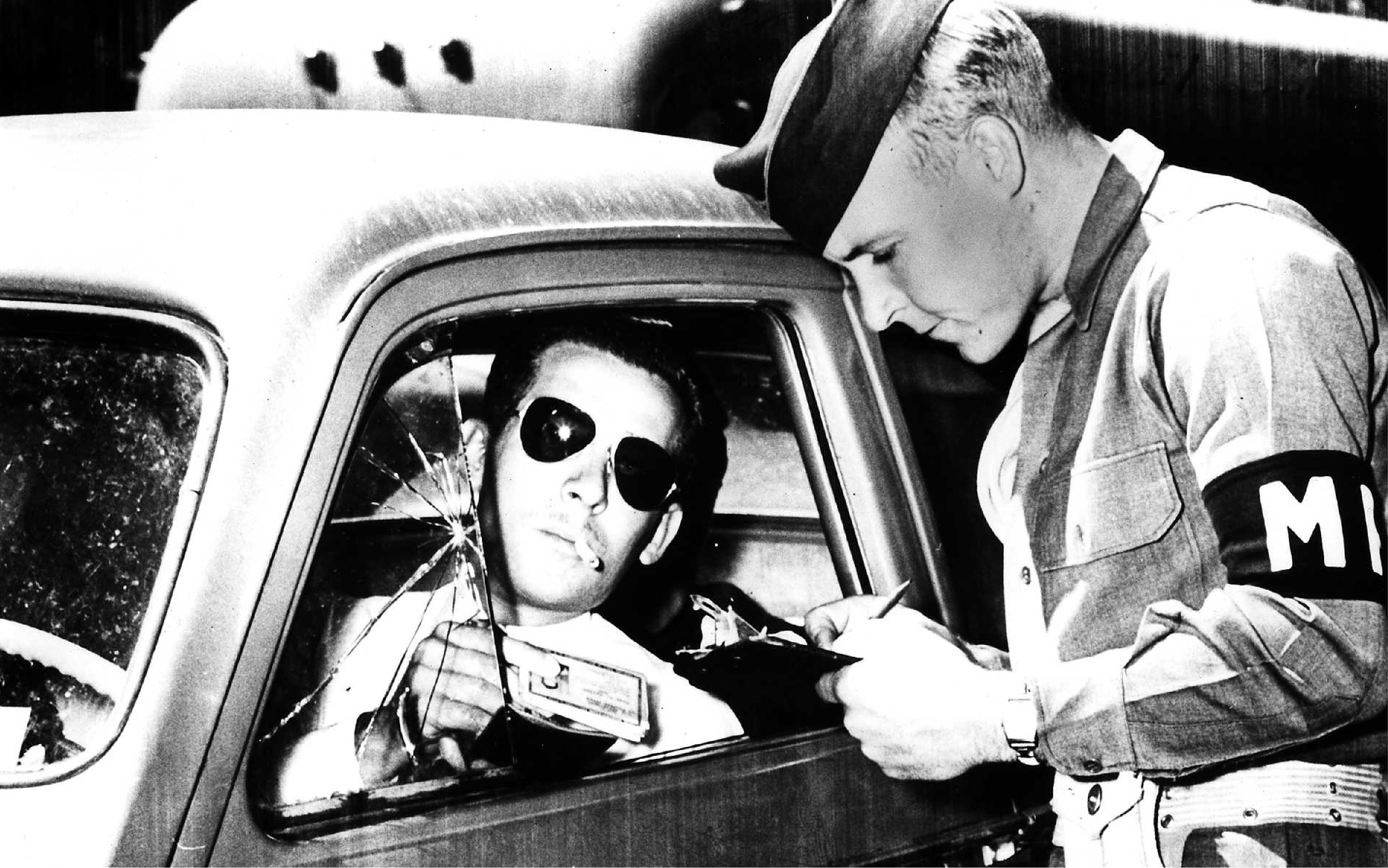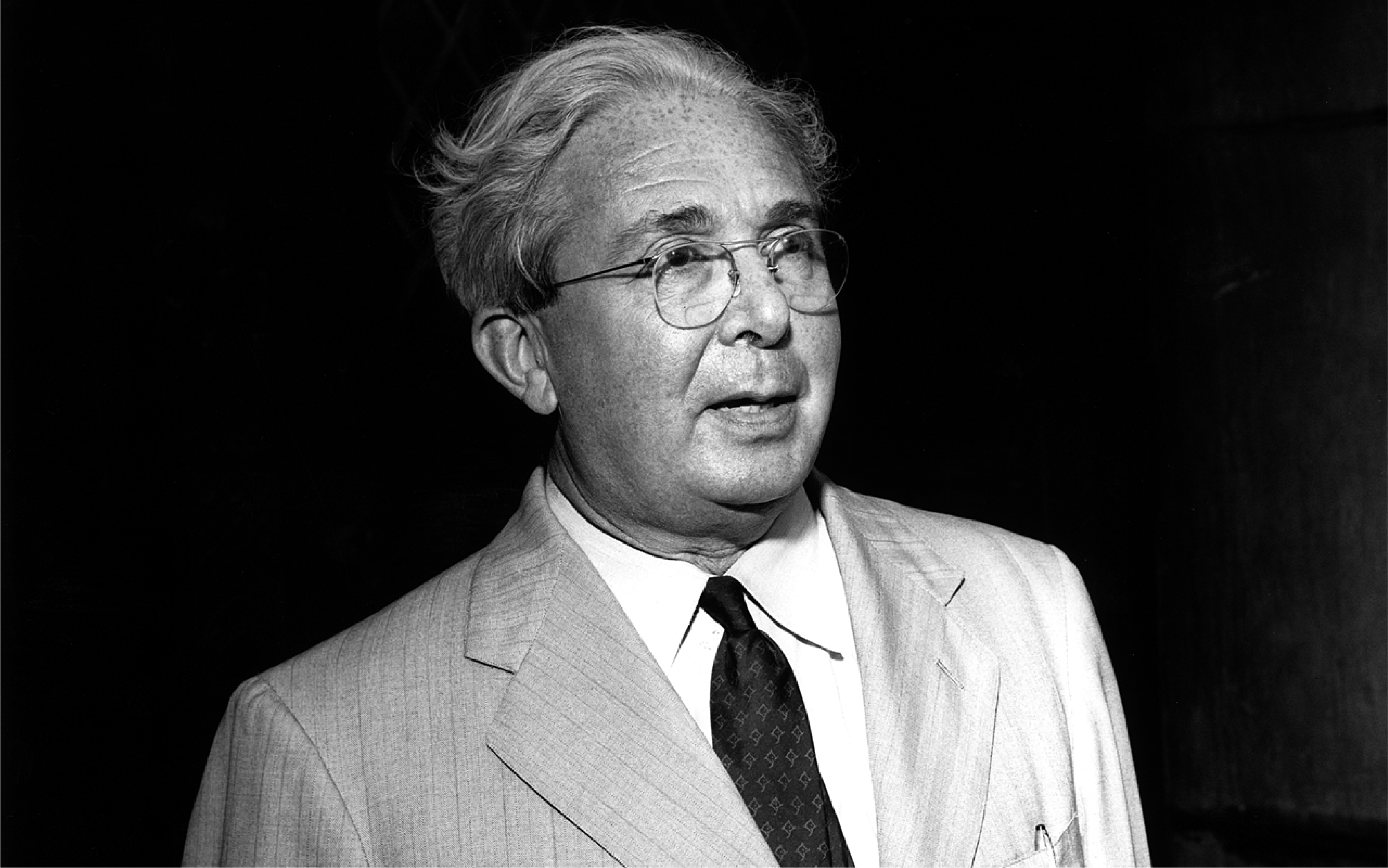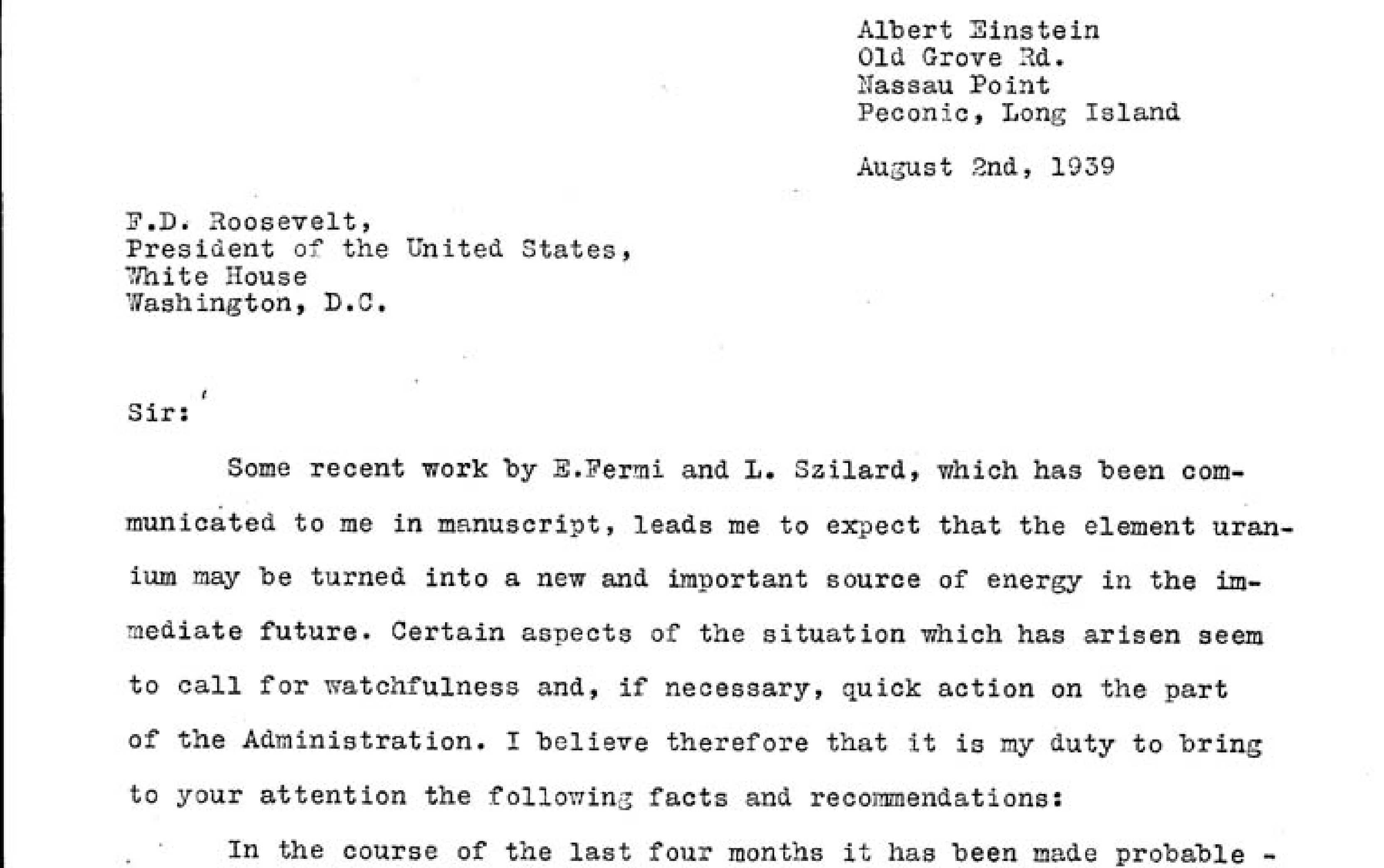The Manhattan Project: How It All Began
On August 6, 1945, the United States dropped a nuclear weapon on Hiroshima, Japan – the first time such a catastrophic weapon was ever used in conflict. Three days later the U.S. released another on Nagasaki, devastating the city and ushering in the nuclear age. Over the next few weeks, Global Zero will explore what led to the bomb’s development, the consequences of its use, and where we’ve come since those fateful days in August. This is the first post in our series “‘My God, What Have We Done:’ The Legacy of Hiroshima and Nagasaki.”
During World War II, three U.S. cities did not appear on any maps: Hanford, located in a desert environment in Washington State; Oak Ridge, situated on the scattered hills of eastern Tennessee; and Los Alamos, which lies on an isolated tableland in northern New Mexico. The approximately 125,000 individuals who worked and lived in these cities referred to them only by their code names: X, Y, and Z. The badges of these employees bore no name. What on earth could demand such high levels of secrecy?

The answer can be found in the tragic events that occurred on August 6 and 9, 1945: the respective atomic bombings of the Japanese cities of Hiroshima and Nagasaki. Reverberating throughout history, the bombings revealed the astonishing and disquieting accomplishment of the top-secret “Manhattan Project.” The United States had created the most destructive weapon ever witnessed in the history of humankind.
The idea for nuclear weapons was actually conceived during a walk on the streets of London. On September 12, 1933, Hungarian physicist Leo Szilárd had just stepped off the sidewalk when he suddenly thought of the possibility of a nuclear chain reaction as a way to simultaneously release and harness the energy contained in atoms. A few years later, Austrian scientist Lise Meitner and her physicist nephew Otto Frisch realized an atom of uranium bombarded with neutrons would stretch until it divided itself into two pieces. Frisch named this phenomenon “nuclear fission.” Scientists deduced that a chain reaction could then be created that would emit an enormous amount of energy. Szilárd’s idea was viable.

As advances in atomic research were made, concerns over a Nazi Germany program attempting to use the new energy source to develop a massively destructive weapon grew. Although these suspicions were not confirmed, Adolf Hitler had control over the uranium mines in Czechoslovakia, had purchased uranium abroad, and had one of the foremost atomic scientists, Dr. K. Clusius, working for him. It seemed very likely that Nazi Germany could be developing nuclear weapons.
Wanting to warn other leaders, Leo Szilárd and Eugene Wigner, another Hungarian physicist, visited Albert Einstein for advice. They informed Einstein his famous E = mc² equation, which theorizes that a small mass can unleash immense energy, was probably being used by Nazi Germany to create nuclear weapons. After some discussion, the three scientists agreed the U.S. government should be notified.

On August 2, 1939, Einstein signed a letter addressed to U.S. President Franklin D. Roosevelt, warning him about the military applications of the new source of energy and the potential of a nuclear weapon project in Nazi Germany. Roosevelt replied in October, saying he had appointed a committee to carry out an investigation into the matter. Scientists in the United States had also been conducting atomic research but progress had been slow.
The United States had created the most destructive weapon ever witnessed in the history of humankind.
By the end of summer 1942, the top secret Manhattan Project, named for the location of the engineer district, was formally underway. Under the direction of Colonel Leslie Groves of the Army Corps of Engineers, the project attracted the era’s brightest physicists, some of them having fled continental Europe. Several scientists provided their contribution from outside the three primary cities, including those in Washington, D.C.; Detroit, MI; Berkeley, CA; Montreal, Canada; and London, England. Their mission: develop and build an atomic bomb before the Germans.
In our next post, we tackle how the brightest minds of the twentieth century reached one milestone after another, culminating in the development of the atomic bomb.
Additional source: The Manhattan Project: The Birth of the Atomic Bomb in the Words of Its Creators, Eyewitnesses, and Historians, edited by Cynthia C. Kelly, 18-19. New York: Black Dog & Leventhal Publishers, Inc., 2007.